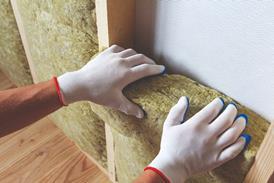The report also suggests the NHBC guidelines on the number of sockets are perhaps not reflective of the real needs of today’s homeowners. These guidelines were apparently written in 1994 - which in consumer electronics terms is akin to prehistoric times.
Those were the days before the explosion of home PC’s, telephone answering machines, satellite TV, Dolby Surround Sound and Sony Playstations, to name just a few.
Look behind my hi-fi or my computer workstation, worse still look in my kids’ bedrooms and you’ll see spaghetti junctions and four gang extension sockets everywhere - it’s surprising I get any sleep at night with the worry of it all!
Power to the people
So I buy-in totally to what the CDA survey has found and I urge the NHBC to consider a rewrite of the guidelines. Power to the people, I say.
Of course builders don’t need to wait for the NHBC to change. Some are already being more generous with the numbers of sockets, and hardly a month goes by without a builder somewhere announcing some new scheme to offer more choice and flexibility to the homebuyer. But it’s not all good news.
Some months ago we started to work on the development of a new customer satisfaction questionnaire designed specifically for the new build market. Part of this development work included interviewing a large number of recent new homebuyers to understand from their point of view the key drivers of satisfaction and/or dissatisfaction. As you might expect, we interviewed some very dissatisfied customers - but we also interviewed a lot of customers who are delighted with their purchase.
Troublesome little things?
We also found customers who are happy with their homes overall but who are immensely frustrated by the little things. The emotions of this group of homeowners were mixed.
Some were frustrated by lack of attention to detail. I remember one owner whose kitchen had a ludicrous positioning of plug points that rendered most of the worktop a no-go area for anything electrical. As he said: “None of the designers of this house has ever lived in one of these homes or even considered how it might be used. It’s been built to a price and it tells me they just don’t damn well care!”
Every time he used his kitchen he was angry and as a result of this every other problem in the house, however small, was amplified in his mind. An £80,000 dream was slowly becoming a nightmare.
Other customers seemed partly to blame themselves. I interviewed one couple in a very large house that must have set them back at least £300 000 and they were very unhappy about the provision not only of plug points but also of TV and phone sockets. They had assumed that in this day and age, and at the price they had paid, the builder would naturally over-populate the home with such conveniences, but not so. They now felt angry that they had made such an assumption and wished they had spent more time pouring over the plans.
In my experience many homebuyers do not check the fine details of the property they are buying as their emotions are running too high to take it all in. They often only find out any shortcomings in the weeks after moving in.
Even worse, some homebuilders do not go through the fine detail with the customer prior to purchase. Some seem to positively avoid it in case the buyer starts asking for additional sockets and other little things that will inconveniently add to the paperwork and make managing the build programme more difficult.
A pity this, because as far as the purchaser is concerned these little things can really add value. I have interviewed many homebuyers who talked more about the flexibility and choice offered by the builder than about the design of the home itself.
Priced to sell - or deter?
The CDA report picks up on a third group of customers that I also found in my interviews. Their report suggests that when customers have asked for additional sockets, builders have been known to charge more for this simple addition than a contractor would charge for a retrofit. These high prices just put people off.
I spoke to someone a few days ago who had been quoted £135 by his builder to fit a standpipe in his back garden. He waited until after moving in and got a local plumber to do it for £55.
Needless to say this person had some rather negative views about the customer focus message that his housebuilder espouses in his sales literature.
Profit is one thing, but pricing optional extras at a level designed to deter anyone from ordering them is quite another.
Recently I was relating the subject of optional extras to a gathering of housebuilder types and brought up the kitchen worktop incident mentioned. I was pleased to see all the heads nodding to indicate a concern shared - all that is except one, who said: “That’s just typical of today’s customers’ - all that fuss over one silly plug point - you just can’t win!” The mind boggles.
The plug point test
My advice to any aspiring house purchaser is to get your builder to take the “plug point test”. Ask him for some additional sockets (bearing in mind you must do this before a certain stage in the build programme).
If the answer is ‘no problem, how many would you like’ and the price seems reasonable then the chances are you’re dealing with a customer-focused housebuilder.
If however you’re greeted with a roll of the eyes and a sharp intake of breath, the sort of gestures that would not be out of place in a second-hand car showroom, then you’ve been warned!
Current consumer thinking
The Copper Development Association interviewed owners of two-year old homes to find out how satisfied they were with the level of electrical convenience their homes had to offer. They found that fewer than 30% of new homebuyers considered electrical convenience a high priority at the time of purchase, and fewer than 20% were asked if the installed sockets were sufficient and suitably placed to meet their needs. But by the time their homes were two years old, over 50% said they did not have enough sockets to cope with the demands of modern technology and many criticised the poor positioning of their sockets. The report highlights the growth in consumer electronics and the need for so many items to be permanently plugged in and on standby. The report also warns of the danger of over-long extension leads that are not designed to be walked upon, leads frequently placed under carpets where damage goes undetected and fuses that are rarely of the correct rating. The CDA also had feedback that indicates builders charge more to install an additional socket at build time than a contractor would charge for a retrofit. They found one respondent - a recent homebuyer - who had been quoted under £300 by a local contractor for six additional double sockets. The CDA is producing leaflets for local electrical contractors to use in their promotional activities that highlight the arguments for having extra sockets installed. For more details on the CDA report tel: 01727 731215Source
Building Homes
Postscript
Malcolm Pitcher is a director of PCL, a consultancy specialising in marketing strategy, brand strategy, culture change, change management, marketing research and customer satisfaction monitoring. Before starting PCL, he was marketing director for Wimpey Homes and held senior posts with Volkswagen and Honda. PCL can be contacted on 01666-510813, e-mail: info@pitcherco.com



















